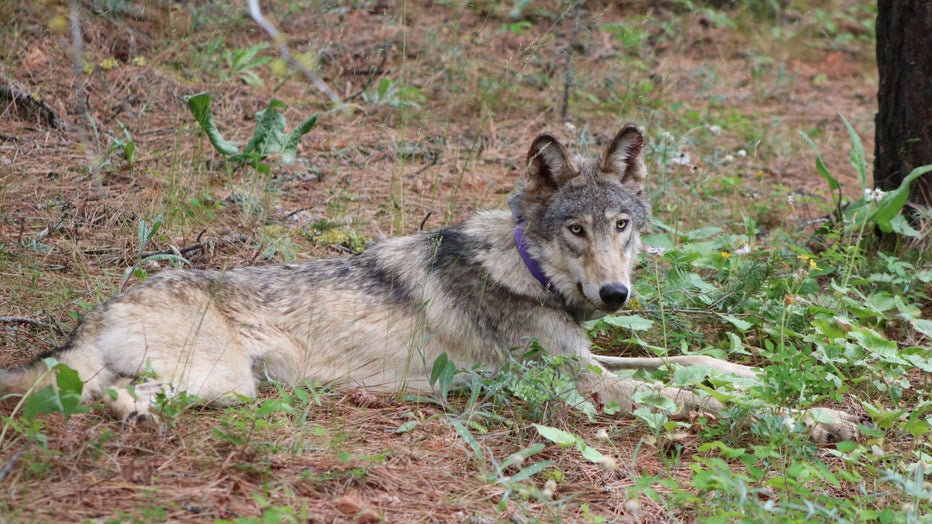Rare gray wolf from Oregon travels 'significant distance,' south into Central California
FRESNO, Calif. - A rare gray wolf being tracked by California and Oregon animal officials is moving into uncharted territory for GPS-collared wolves that have preceded him.

A young gray wolf from Oregon has been tracked farther south in California than any previous wolf equipped with a GPS collar, state fish and wildlife said on March 22, 2021. (California Department of Fish and Wildlife)
The young male wolf, known as OR-93 was born in Oregon. The latest reading showed that he had made his way farther south, down to central Fresno County. That’s the farthest any previous wolf equipped with a GPS collar has traveled, the California Department of Fish and Wildlife (CDFW) said.
The wolf was a part of Oregon's White River pack, located southeast of Mt. Hood. He was fitted with a tracking collar by the U.S. Fish and Wildlife Service and Confederated Tribes of Warm Springs in June 2020, according to CDFW officials.
"Like many young wolves, he subsequently left his pack in search of a new territory and/or a mate," the department said in a press release on Monday.
Fish and wildlife officials said OR-93 has traversed "a significant distance" since he was located in Modoc County in early February. The past few weeks, the wolf was tracked moving through Mono County in the Eastern Sierra region, through parts of Tuolumne, Mariposa, Merced and Madera counties, before being located in Fresno County.
SEE ALSO: Wolf tracked near Yosemite for 1st time in 100 years
Gray wolves are an endangered species under California law, and state animal officials warned residents that it’s illegal to harass, harm, pursue or capture them.
Officials also noted that the animals pose very little safety risk to humans.
"Though gray wolves are generally much bigger than coyotes, they can sometimes be misidentified," the department said, noting that OR-93 can be identified by his purple collar around his neck.
Gray wolves were eradicated in California early in the last century due to their perceived threat to livestock. It wasn’t until 2011, they were confirmed to have returned to the state when a wolf from Oregon crossed into California.
"CDFW is working to monitor and conserve California’s small wolf population and is collaborating with livestock producers and diverse stakeholders to minimize wolf-livestock conflicts," the department said.
Fish and wildlife said the department will continue to monitor the whereabouts of OR-93, working in cooperation with its counterpart in Oregon.
You can find more information about California’s gray wolf management program on the CDFW’s wolf webpage here.
The Associated Press contributed to this story, which was reported from Oakland, Calif.

